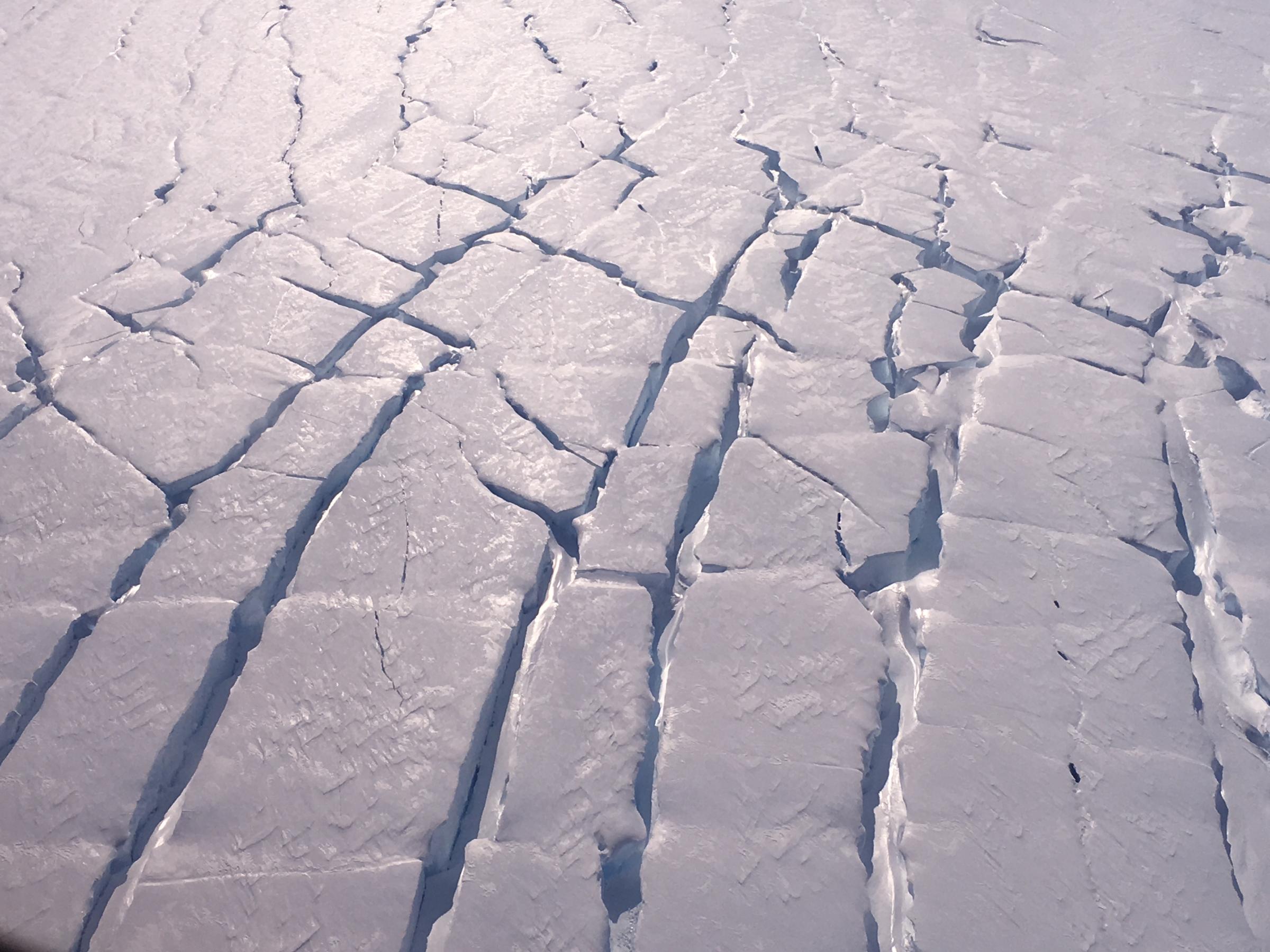There is a reason Antarctica’s Thwaites Glacier is often referred to by its supervillain moniker. ‘Doomsday Glacier’ better sums up the consequences should the Florida-size slab of ice collapse due to rising temperatures: a global sea level rise of more than 2 ft., enough to wipe out low-lying island nations and many of the world’s major coastal cities. But while drastic, the projected timeline for such a melt, over the course of a century or more, offered some comfort—time to figure out a solution, or at least adapt. A recently completed field study, undertaken by the International Thwaites Glacier Collaboration (ITGC), a five-year, $50 million joint U.S. and U.K. mission, however, just made that timeline harder to predict.
The Thwaites Glacier works kind of like a cork at the end of a frozen river that’s slowly funneling snow and ice from interior Antarctica to the ocean. As long as the cork is in place, the accumulated ice doesn’t move and most of that precipitation stays safely bottled up on land. But should Thwaites break up, it would allow the frozen river to flow into the ocean at a much more rapid pace, leading to rising sea levels.
As it is, ice draining from Thwaites into the Amundsen Sea accounts for 4% of global sea level rise every year. The ITGC’s MELT project was set up to better understand how ice and ocean interact at Thwaites’ grounding line—the point where a land-based glacier meets sea bed and starts to float as an ice shelf. Scientists wanted to assess the speed of melt to better project the glacier’s future (this study was not designed to set a timeline, just to understand the mechanics of melting). To do so they sent a video-enabled robot called Icefin through a 600-meter-deep borehole to the grounding line to take a look.
Read More: After Visiting Both Ends of the Earth, I Realized How Much Trouble We’re In
For years, scientists watching Thwaites theorized that its sheer size and unique structure—the ice resting over the continental shelf is so heavy that it has actually compressed bedrock, creating a bowl-like base—meant that water pooling under the glacier at the grounding line could act as a kind of lubricant, accelerating its progress into the sea. The Icefin told a different story. The layer of water under the glacier is actually melting more slowly than expected. That’s the good news. The bad? A series of terraces and crevasses that reach up into the ice are expanding.

When crevasses open up, water funnels through them, bringing more water, salt, and heat into the ice. The crevasses widen further into cracks and fissures that destabilize the ice shelf even further. Those rifts could, in turn, become the primary trigger for the glacier’s collapse. “It’s not just how much melting is happening, but how and where it is happening that matters in these very warm parts of Antarctica,” says Britney Schmidt, an associate professor at Cornell University who led the Icefin research project in a statement on the project’s website. “Warm water is getting into the cracks, helping wear down the glacier at its weakest points.”
It is in a glacier’s nature to fray at its edges, calving icebergs into the sea. But normally there is a balance, says oceanographer Peter Davis, of the British Antarctic Survey, who was lead author on a second ITGC study on the MELT project: ice coming from the continent is typically equivalent to the amount of ice being lost through melting and calving. Even if the bottom of the glacier is melting more slowly than theorized, it doesn’t mean that Thwaites is in the clear, says Davis. “There is still rapid glacier retreat, so it seems that it doesn’t take a lot to push the glacier out of balance.”
More Must-Reads from TIME
- Caitlin Clark Is TIME's 2024 Athlete of the Year
- Where Trump 2.0 Will Differ From 1.0
- Is Intermittent Fasting Good or Bad for You?
- The 100 Must-Read Books of 2024
- Column: If Optimism Feels Ridiculous Now, Try Hope
- The Future of Climate Action Is Trade Policy
- FX’s Say Nothing Is the Must-Watch Political Thriller of 2024
- Merle Bombardieri Is Helping People Make the Baby Decision
Contact us at letters@time.com